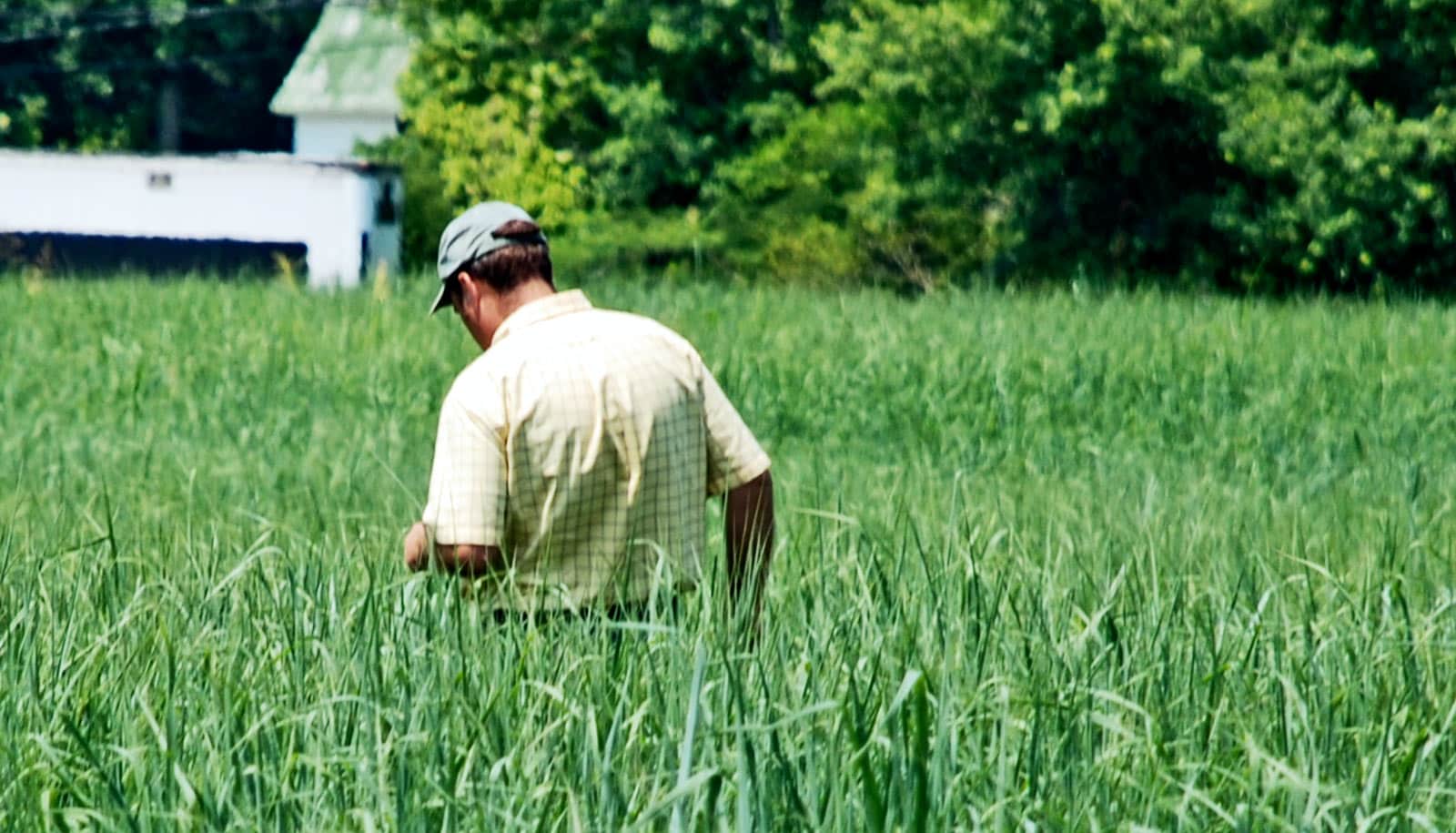
New research details how switchgrass, a biofuel crop, can mitigate effects of climate change when grown on marginal land—agricultural land of little value.
For farmers, it may also provide economic returns in these otherwise unproductive spaces.
Lignocellulosic biofuels, which are made from plant biomass, are one of the only current renewable energy sources with potential as a fuel alternative for vehicles. But fossil fuel problems aren’t easily solved by simply planting more biofuel crops such as switchgrass.
“To get farmers to change their behavior, the change has to make sense for them economically first and foremost.”
“Growing enough to use biofuel crops for the transportation sector at a large scale would require massive land use changes,” says Bruno Basso, a professor of earth and environmental sciences and plant, soil, and microbial sciences at Michigan State University.
“This is a problem with many layers. There are food security concerns if land previously used for food crops was shifted to biofuel crops. There are also greenhouse gas emission concerns if land not currently used for agriculture, such as wildlife habitat, is overtaken by crop production systems.”
The challenge is magnified when farmers consider what to do with marginal, less-productive land. With rising input costs, there is often little to no advantage to plant in these areas. If growers do decide to plant, environmental issues abound, as these fields are often nitrogen-deficient and may require heavy use of fertilizers.
“To get farmers to change their behavior, the change has to make sense for them economically first and foremost,” Basso says. “Our goal was to examine whether marginal lands could be both profitable and environmentally conscious, something that would be a victory for everyone involved.”
For this project, the researchers used a multi-model ensemble of crop simulation systems that factor in soil, weather, and management data. These included three models from previous studies and Basso’s System Approach to Land Use Sustainability (SALUS) program, which simulates daily crop production over many years using different management strategies.
The multi-model ensemble is designed to better understand and quantify the uncertainties coming from model input and parameters unique to each model. Basso says this is the first study to use a model ensemble linked to artificial intelligence for switchgrass used for bioenergy production.
Basso’s team discovered that low amounts of nitrogen fertilizer provided long-term boosts in yield that outweighed greenhouse gas emissions, a finding that runs contrary to other studies. Researchers believe the benefit can be much greater on lands limited by nitrogen deficiency, which is the case in several areas of Michigan. Basso notes that the use of this strategy is not as effective in areas with rich soil organic carbon or those with low precipitation and short growing seasons.
“This shows that some marginal lands lacking nitrogen have potential value for biofuel crop production, which is of interest to farmers looking to increase profitability and of environmental importance by reducing the carbon footprint of the operation,” Basso says.
“It’s important that when trying to solve a problem we don’t create another, so the levels of added nitrogen fertilizer are crucial to maintaining the overall net-positive climate result.”
The research appears in Environmental Research Letters.
The research was supported in part by the Great Lakes Bioenergy Research Center; the US Department of Energy’s Office of Science, Biological and Environmental Research program; the US Department of Agriculture’s National Institute of Food and Agriculture; and MSU AgBioResearch.
Seungdo Kim, an associate research professor in the MSU College of Engineering, and Rafael Martinez-Feria, a postdoctoral researcher in Basso’s laboratory, were also involved.
Source: Cameron Rudolph for Michigan State University